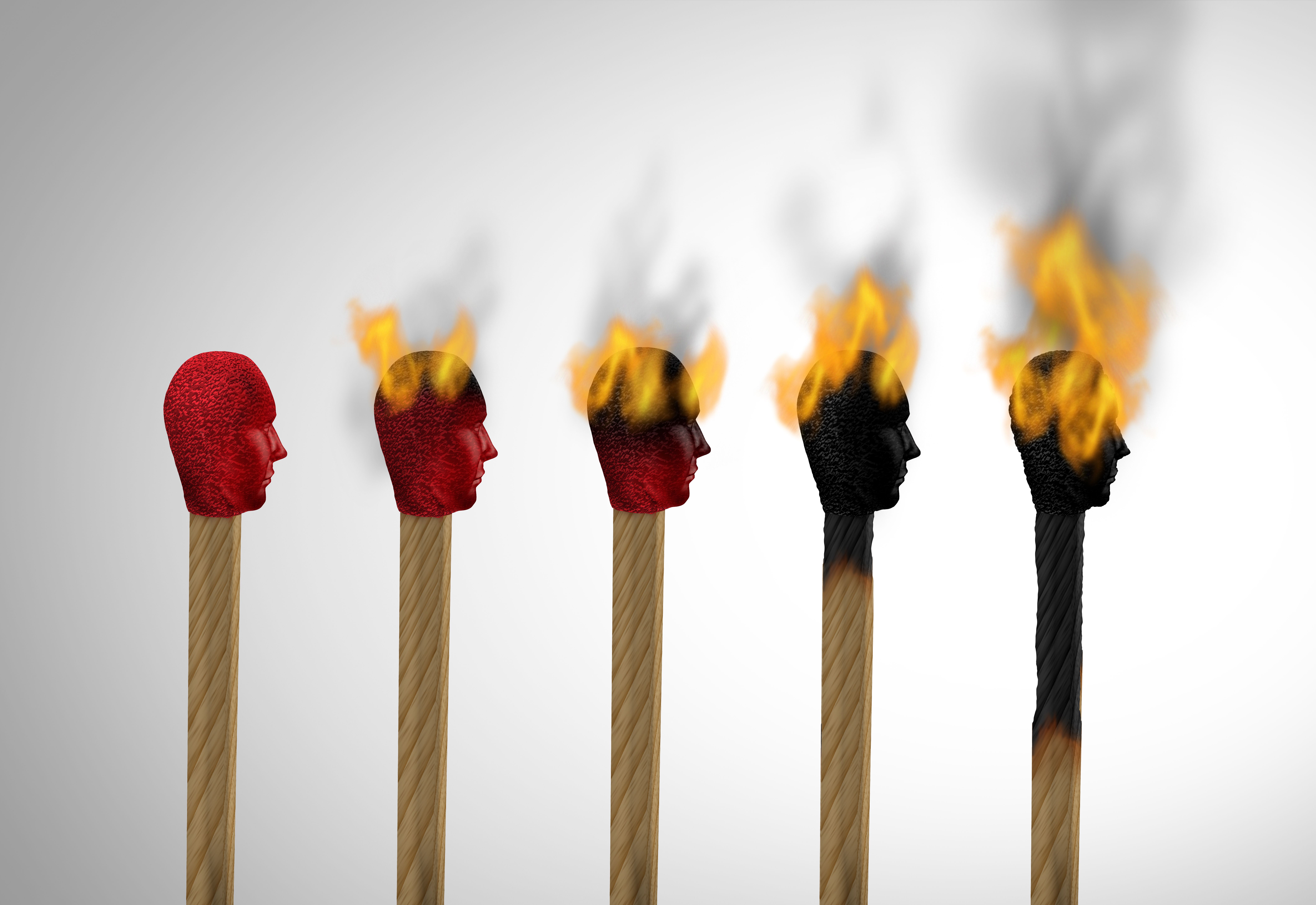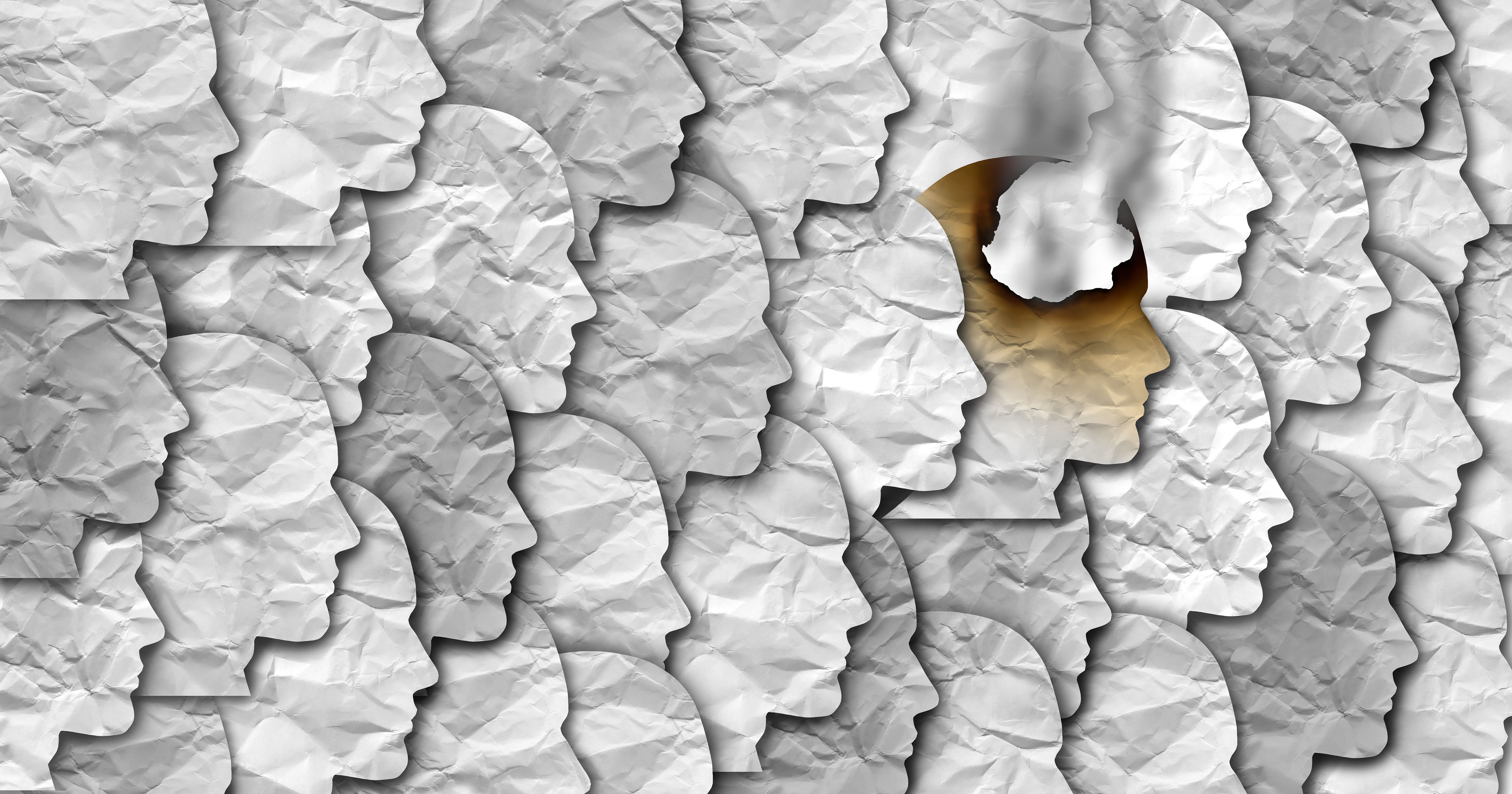Finding purpose and support: An antidote to burnout

In this day and age we find ourselves in a very different work environment and our perspective on work has and will continue to change. The pandemic has accelerated many societal trends, one of which is that many people now work from home. For some this is an added stressor, while others view it as more of a relief. Additionally, there has been a kind of reorientation around work and how it fits into the rest of our lives. Many people have started to ask themselves a potentially life-changing question: Where does work end and home-life begin? Another group of workers can tie their feelings of burnout to being understaffed, overworked, and required to have new workplace rules.
In the last two years we have heard about the “Great Burnout,” the concept that many people just are not enjoying work as they did before. Anyone doing the same thing for a long enough period may indeed suffer some burnout; but why is it that some people suffer more acutely than others or in more situations than others?
Are you as a leader or as a staff member working in a culture of burnout, exhaustion, or despair? Is there any unhappiness related to your job? Or, are you working in an environment of appreciation, challenge, recognition, and collaboration so burnout is minimized for you and your co-workers?
Defining burnout
Burnout happens when the gap between one’s ideals for work and the reality of the job becomes difficult to bridge; when even going to work is a dreadful proposition. To feel burnout requires you to have some investment in your work. This can manifest through the expectation of satisfaction, a standard of performance, and for some even a passion for the work itself. The investment may be a search for status, dignity, or fulfillment. That emotional or psychological investment motivates you to work, and when your job consistently fails to meet those expectations you find yourself on the fastrack to burnout.
Burnout manifests in any number of ways, but exhaustion, inadequacy, and persistent cynicism are often hallmarks of it. Not the sort of satisfied exhaustion you may feel at the end of a long project or an intense physical workout; but the kind of exhaustion that exists alongside despair. When nothing is changing for the better and you feel like you can’t do anything about it.

Burnout often follows negative words or activities people are subjected to from their leadership or peers. It doesn’t necessarily stem from the hours put into their work. Additionally, when you are unconnected from your work, are unsatisfied at work, or cannot fathom that your work is important or meaningful, that's when you are most in danger of burnout. Think about it: if you love doing something, receive positive recognition, play on a great team, feel challenged, and do not feel overworked, could you do that same thing for hours and hours? The people who fit into this group are likely to find that work is satisfying and sometimes even fun, under the right circumstances.
When I started at CVO, I explained to my family that I would work 12-15 hour days as long as I felt motivated, appreciated, supported and that negativity was avoided. My brother and I were building a business and for us that was fun. I understood that at that point in my life it was more about “work-life fit” than balance because balance itself, the idea of 50-50 was only temporary. With four young kids and a growing business stress was to be expected and balance would be a luxury. And to be fair, everyone has to know what fits for them and then find a job that fits. There is no one-job-fits-all solution. Working in a job that you don’t like or one that doesn’t like you often leads to quicker burnout than simply working long hours. And that’s the bigger trick, finding the right job.
Managing life’s demands to avoid burnout
I was first exposed to the concept of burnout in the 1970s as a young athlete and then as a student learning about psychology and labor economics. From my observations, I could see why some burned out at school or in sports and why others seemed more resilient in the same circumstances. Often there was a psychological component to these outcomes: How you were engaged in the activity and why were you engaged? Purpose played (and continues to play) a big part in avoiding burnout.
What I find interesting is that many people can participate in their work, home life, philanthropy, or sports activities, while actively reducing the possibility of burnout; even after years of continuous hours. My observation is that you have to have purpose, vision, passion, and love for what you’re doing. Of course having personal balance, being recognized and appreciated, and feeling good about yourself helps. Being in a supportive family or a supportive group at work does wonders to keep your energy high and burnout low.
To be clear, each of us has pressures in life that will impact us. Aging parents, a sick spouse or child, financial challenges, health issues, and more will add to the daily pressure. And there are times when all of us feel a little burnt out. The trick is to recall life is (hopefully) a marathon and not a sprint. We have to be cognizant of how to make the distance. For many successful people, this is a cornerstone philosophy of how they approach life. At work we can spot people who seem to be happier than others despite their personal pressures or the stress at work. What makes them different ?
Part of avoiding burnout is delegating to others, eliminating the unnecessary, prioritizing tasks and automating activities we face both at work and at home. Asking others for help, reducing unnecessary tasks, and looking for efficiency in what we do. Being creative in addressing burnout is not as easy as it sounds, it requires dedicated work but without a plan to minimize the potential of burnout, the possibility of burnout increases.
Your personal capacity to address stress is aided by living a healthier lifestyle with plenty of exercise, sleep, a proper (I recommend plant-based) diet, and time for mindfulness and stress reduction. In addition, avoiding unhealthy habits such as excessive drinking or smoking will also help you maintain strength to handle the day to day stresses we all face.
Also, we’re creatures meant to be outside. During the initial stages of Covid when the gyms closed I took to walking. Lots of walking. Some days it was nine miles. Other days it was four miles. Or six miles. Sometimes I would just walk. Other times I would walk and talk. So many great conversations were had with friends, family, and colleagues. Whether it was being in nature or being in a state of connection with others, those walks made me feel great.
Minimizing burnout at ClearVision Optical and your workplace
Let's take a moment to note that burnout culture extends far beyond work. Almost everything we have to engage with comes with some amount of frustration. Going to the doctor? Now you have to deal with insurance. Going on a trip? Now you have to deal with TSA and all the travel logistics that come along with it. Nothing is easy, nothing is simple, and very little is kind, especially in the light of a pandemic.
A few weeks ago an employee brought to my attention that many in our society were feeling burnt out, lethargic, and unhappy at work. That got me thinking so that night I read and read until I found an article I liked and I passed this article on exhaustion to our 180 ClearVision Optical associates. I asked for an open discussion. I heard from many on our team about:
- Childcare costs.
- The challenges of a double-income family.
- Caring for elderly parents.
- Spouses with less caring and fulfilling employment situations.
- Healthcare system issues.
- Societal negativity and polarization.
And what I learned and what we all should be cognizant of is that all of these stressors exist before anyone walks into work. The article I shared explained burnout is 2,000 years old. In reading history we can find more about burnout. It’s not a modern phenomenon. However, today we are moving at a faster pace. Society and work norms are rapidly changing. Our support groups may be thousands of miles away and the pandemic certainly has us all on edge a little bit more than we like. Stress in the modern era is indeed different than in earlier periods in history, but the feeling of being burned out is the same as it ever was.
So what to do? It is important to build personal resilience, to take care of yourself and to improve coping skills. It is important to be in a supportive situation at work and at home. Be compassionate and understanding to others. It is important to have a collaborative work environment and to have open communication with your staff and peers. Our personal and professional challenge is to reduce burnout and to enhance our own lives and those of others around us.
Be intentional. Be mindful. It can be done. It does take work. It is a journey and it matters.



